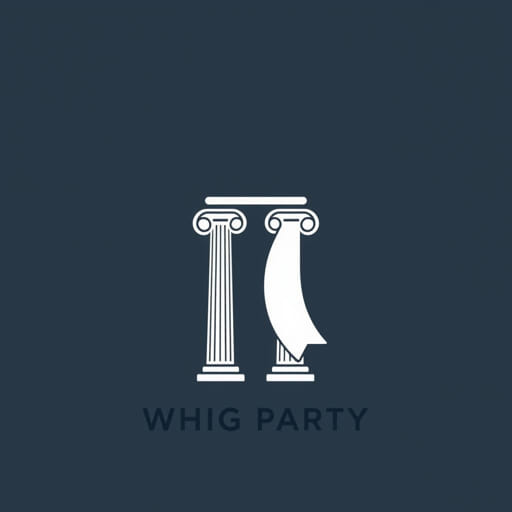In American history, the Whig Party played a central role during the early to mid-19th century, standing as one of the two main political forces alongside the Democratic Party. Originating in the 1830s, the Whig Party was formed primarily to oppose the policies of President Andrew Jackson and to advocate for a more active role of the federal government in economic development. Understanding how to use Whig Party in a sentence requires not only grammatical awareness but also a basic grasp of its historical background, influence, and eventual decline in the American political landscape.
Understanding the Whig Party: Background and Significance
The Whig Party emerged as a coalition of National Republicans, Anti-Masons, and disaffected Democrats. It was officially established around 1833 and became a powerful force in U.S. politics until the mid-1850s. The party’s name was chosen to draw a symbolic parallel with the British Whigs, who were known for opposing the monarchy; similarly, American Whigs resisted what they perceived as President Jackson’s authoritarian tendencies.
Key Beliefs and Policies of the Whigs
- Support for a strong role of Congress over the presidency
- Promotion of modernization and economic protectionism
- Encouragement of internal improvements like roads, canals, and railways
- Favoring national banks and paper currency
- Generally supported by business interests and the professional class
Understanding these values provides context for how one might use Whig Party in both historical and modern sentences. It’s not just a party label it represents a set of political principles that shaped significant debates over America’s direction in the 19th century.
Use of ‘Whig Party’ in a Sentence: Historical and Contemporary Contexts
To effectively use Whig Party in a sentence, it’s essential to consider the proper context. Below are several examples illustrating its use in various sentence structures:
Historical Examples
- Henry Clay, one of the most prominent members of the Whig Party, advocated for the American System to strengthen the economy.
- The Whig Party gained momentum in the 1840s, managing to elect two U.S. presidents: William Henry Harrison and Zachary Taylor.
- Opposition to the Mexican-American War was one of the dividing issues within the Whig Party.
These sentences are useful for historians, educators, and students who need to describe political movements of the 1800s. They clarify the party’s contributions, internal conflicts, and ideological foundation.
Modern Usage and Comparisons
Although the Whig Party no longer exists, it is often referenced in discussions about political realignment and historical party systems. Here are some example sentences in that regard:
- The decline of the Whig Party in the 1850s set the stage for the rise of the Republican Party.
- Some modern political movements resemble the economic nationalism once favored by the Whig Party.
- Historians often compare the fall of the Whig Party to modern shifts in voter alignment.
These examples show that Whig Party can also be applied when drawing parallels with today’s political changes or referencing long-term patterns in U.S. history.
Why Sentence Usage Matters in Historical Education
Using specific political terms like Whig Party correctly in a sentence is essential for both academic writing and public discourse. It reflects an understanding of not only grammar but also the broader historical narrative. Teachers and writers often use such sentences to clarify lessons or deepen readers’ awareness of America’s political evolution.
Practical Sentence Formation Tips
- Always capitalize Whig Party as it is a proper noun.
- Ensure historical accuracy when referencing key figures, events, or ideologies.
- Contextualize the sentence to reflect its place in 19th-century U.S. history.
For example, instead of writing, The Whig party was like today’s Democrats, a better-constructed sentence would be, The Whig Party, although ideologically distinct, once served as a counterbalance to Jacksonian Democrats, much like how political opposition functions today.
Important Whig Figures and Their Relevance
To create meaningful sentences, one must recognize the key individuals associated with the Whig Party. Here are a few notable figures and how to incorporate them into examples:
- Henry Clay: Henry Clay’s leadership in the Whig Party was instrumental in promoting the American System.
- Daniel Webster: Daniel Webster’s oratory skills made him a powerful voice for the Whig Party in the Senate.
- William Henry Harrison: Elected in 1840, William Henry Harrison became the first president from the Whig Party.
These examples not only teach sentence usage but also highlight historical facts in a way that is engaging and informative.
How the Whig Party Influences Language and Discourse
In addition to its historical relevance, the term Whig Party has made its way into literature, academic writing, and even political commentary. Writers often refer to it metaphorically or to highlight certain types of political behavior. This versatility makes it a useful term for crafting both academic and analytical content.
Examples in Analytical Writing
- The Whig Party’s collapse underlines the dangers of internal division in a major political organization.
- By examining the policy priorities of the Whig Party, one can better understand the economic debates of antebellum America.
Such examples show how the term can be embedded into critical arguments or broader historical discussions.
Mastering the Use of ‘Whig Party’ in Sentences
The ability to use Whig Party in a sentence demonstrates both grammatical proficiency and historical literacy. Whether one is writing a school essay, teaching a lesson, or analyzing political change, using the term correctly can add depth and clarity to any discussion. The key is to match the phrase with appropriate historical references, accurate context, and purposeful sentence structure. By doing so, the term Whig Party serves as more than a label it becomes a window into a pivotal chapter of American political development.
